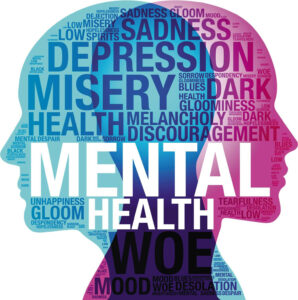Navigating the Emotional Rollercoaster: A Guide to Emotional Regulation
Emotions are a fundamental part of the human experience, yet they can often feel like a rollercoaster, with highs and lows that we struggle to control. Effective emotional regulation is about understanding and managing these emotional ups and downs in a healthy way. It’s a crucial skill that can improve our overall well-being and help us build stronger, more fulfilling relationships. So, how can we navigate this emotional rollercoaster and develop better control over our feelings?
Understanding Emotional Regulation
Firstly, it’s important to recognize that emotions are normal and natural. They provide valuable information about our thoughts, experiences, and interactions with the world. However, when emotions become overwhelming or disruptive, it’s time to implement some regulation strategies. One of the first steps is to identify and label your emotions accurately. Research has shown that putting a name to your feeling can help you feel more in control and reduce the intensity of the emotion. For example, instead of saying, “I’m upset,” try labeling the specific emotion you’re feeling, such as frustrated, disappointed, or angry.
Self-Care and Emotional Regulation
Self-care practices can also play a crucial role in emotional regulation. Taking care of your physical needs by getting enough sleep, exercising regularly, and maintaining a balanced diet can help stabilize your moods and make you more resilient to emotional fluctuations. Additionally, practicing mindfulness and deep breathing exercises can help you calm your mind and body when faced with strong emotions. Mindfulness meditation, in particular, has been shown to reduce stress and improve emotional regulation by helping you stay present and aware of your feelings without judgment.
Challenging Negative Thinking Patterns
Another strategy is to challenge negative thinking patterns. Our thoughts and emotions are closely linked, so changing the way you think about a situation can help regulate your emotional response. Cognitive behavioral therapy (CBT) techniques, such as reframing negative thoughts and practicing self-compassion, can be particularly effective in this regard. For example, if you find yourself thinking, “I always mess everything up,” challenge that thought with evidence to the contrary and a more balanced perspective, such as, “Everyone makes mistakes sometimes, and I’ve also achieved a lot of positive things.”
Building a Support Network
Building a support network of friends, family, or a therapist can also provide valuable support in navigating emotional challenges. Sharing your feelings with trusted individuals can help you process and make sense of them. Additionally, seeking professional help from a therapist or counselor can provide you with additional tools and strategies to manage your emotions effectively. Group therapy or support groups can also offer a sense of community and understanding, which can be incredibly comforting during difficult times.
Healthy Expression of Emotions
It’s important to remember that regulating emotions doesn’t mean suppressing or ignoring them. Instead, it’s about accepting and understanding your feelings and then choosing how to respond to them in a way that is healthy and adaptive. This might involve channeling a strong emotion into a creative outlet, such as writing, painting, or music, or it could mean setting healthy boundaries in your relationships to protect your emotional well-being. Engaging in hobbies and activities that you enjoy can also provide a positive outlet for your emotions and help you recharge.

Practical Tips for Emotional Regulation
- Practice Gratitude: Regularly focusing on what you are grateful for can shift your mindset and improve your emotional well-being. Keeping a gratitude journal can be a simple yet powerful tool.
- Develop a Routine: Having a daily routine can provide structure and stability, which can be particularly helpful during times of emotional upheaval.
- Limit Exposure to Stressors: Identify sources of stress in your life and take steps to minimize their impact. This might involve setting limits on social media use, reducing your workload, or avoiding negative people.
- Use Grounding Techniques: Grounding techniques, such as focusing on your breath, holding a cold object, or describing your surroundings in detail, can help you stay present and reduce the intensity of overwhelming emotions.
- Learn to Say No: Protect your emotional health by setting boundaries and not overcommitting yourself. It’s okay to prioritize your well-being over others’ expectations.
Emotions are a fundamental part of the human experience, yet they can often feel like a rollercoaster, with highs and lows that we struggle to control. Effective emotional regulation is about understanding and managing these emotional ups and downs in a healthy way. It’s a crucial skill that can improve our overall well-being and help us build stronger, more fulfilling relationships. So, how can we navigate this emotional rollercoaster and develop better control over our feelings?
Firstly, it’s important to recognize that emotions are normal and natural. They provide valuable information about our thoughts, experiences, and interactions with the world. However, when emotions become overwhelming or disruptive, it’s time to implement some regulation strategies. One of the first steps is to identify and label your emotions accurately. Research has shown that putting a name to your feeling can help you feel more in control and reduce the intensity of the emotion. For example, instead of saying, “I’m upset,” try labeling the specific emotion you’re feeling, such as frustrated, disappointed, or angry.
Self-care practices can also play a crucial role in emotional regulation. Taking care of your physical needs by getting enough sleep, exercising regularly, and maintaining a balanced diet can help stabilize your moods and make you more resilient to emotional fluctuations. Additionally, practicing mindfulness and deep breathing exercises can help you calm your mind and body when faced with strong emotions.
Another strategy is to challenge negative thinking patterns. Our thoughts and emotions are closely linked, so changing the way you think about a situation can help regulate your emotional response. Cognitive behavioral therapy (CBT) techniques, such as reframing negative thoughts and practicing self-compassion, can be particularly effective in this regard. For example, if you find yourself thinking, “I always mess everything up,” challenge that thought with evidence to the contrary and a more balanced perspective, such as, “Everyone makes mistakes sometimes, and I’ve also achieved a lot of positive things.”
Building a support network of friends, family, or a therapist can also provide valuable support in navigating emotional challenges. Sharing your feelings with trusted individuals can help you process and make sense of them. Additionally, seeking professional help from a therapist or counselor can provide you with additional tools and strategies to manage your emotions effectively.
It’s important to remember that regulating emotions doesn’t mean suppressing or ignoring them. Instead, it’s about accepting and understanding your feelings and then choosing how to respond to them in a way that is healthy and adaptive. This might involve channeling a strong emotion into a creative outlet, such as writing, painting, or music, or it could mean setting healthy boundaries in your relationships to protect your emotional well-being.
Conclusion
In conclusion, navigating the emotional rollercoaster is a skill that anyone can develop with practice. By implementing these strategies and seeking support when needed, you can improve your emotional regulation and find a greater sense of balance and peace in your life. Remember, it’s okay to not be okay sometimes, but it’s also important to have the tools to get back on track and manage your emotional journey effectively. Embrace your emotions as a natural part of life and use them as a guide to understand yourself better and create a more fulfilling and emotionally balanced existence.
By following these tips and continually practicing emotional regulation techniques, you can build resilience and navigate life’s challenges with greater ease. This guide aims to provide you with the knowledge and tools needed to master the art of emotional regulation and lead a healthier, happier life.
In conclusion, navigating the emotional rollercoaster is a skill that anyone can develop with practice. By implementing these strategies and seeking support when needed, you can improve your emotional regulation and find a greater sense of balance and peace in your life. Remember, it’s okay to not be okay sometimes, but it’s also important to have the tools to get back on track and manage your emotional journey effectively.
















